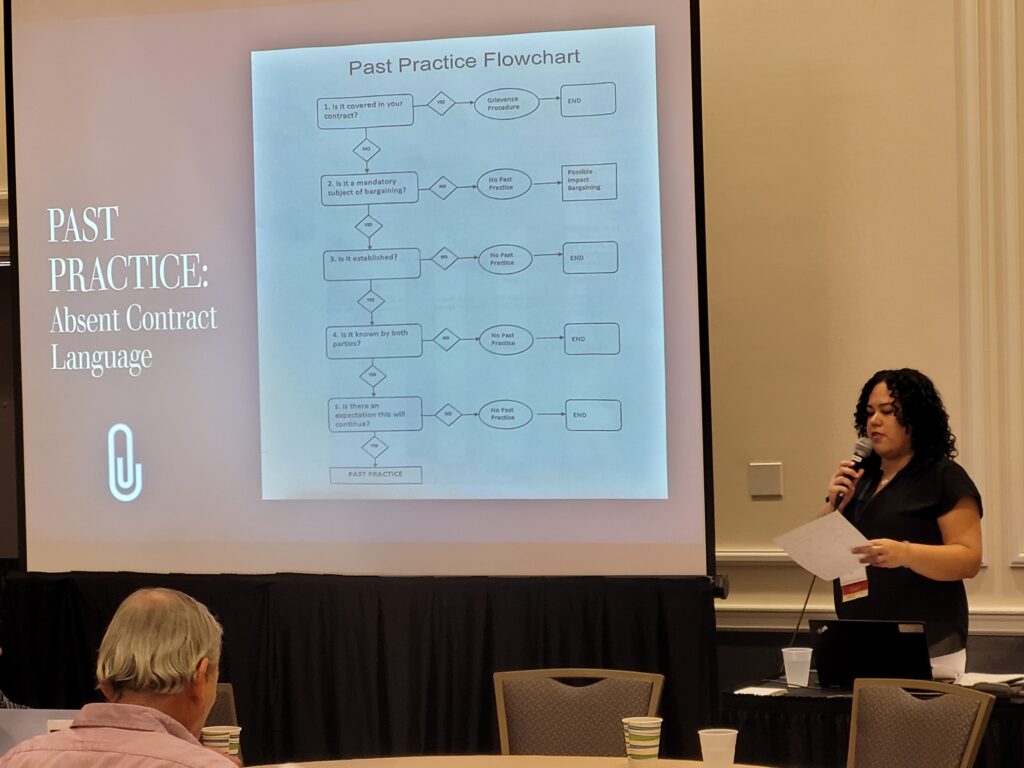
By Jim Werner
I was pleased to attend NYSUT’s 43rd Annual Community College Conference in Saratoga Springs on November 4-6. As usual, there was a rich selection of panels on a wide variety of union-related topics. A session on “Complaints, Grievances and Arbitrations, Oh My!” was expertly led by our own WCCFT Vice President Deirdre Verne, and our NYSUT Labor Relations Specialist Amanda Velazquez provided an exceptionally informative overview of the grievance and related processes.
The session that I moderated was of particular interest to me, though—and to our local as we strive to improve the working conditions of our contingent faculty. The session was titled “How Community College Locals in California Are Making Progress for Adjunct Faculty,” and it featured a presentation by John Govsky, Co-Chair of the California Federation of Teachers (CFT) Part-Time Committee, a CFT Vice President, and members of the American Federation of Teachers’ Higher Education Program and Policy Council. While California’s higher education system is markedly different from New York’s in many ways (especially its community colleges), recent strides they have made on behalf of adjuncts are worth close examination and perhaps emulation.
California’s community college system is highly complex, comprised of 72 different districts, all with locally negotiated contracts, employing some 35,000 adjuncts. The CFT had recently waged a campaign to increase the limit on the number of courses that adjuncts can teach (from the current 67% of a full-timer’s regular load to 85%). The initiative was ultimately unsuccessful, the major reason being that this would make adjuncts eligible for employer-sponsored healthcare under the ACA (“Obamacare”), which the colleges/districts could not afford. It was therefore decided to attempt a resolution through the budget process. Thanks to an intensive state-wide letter-writing campaign, the CFT was successful in increasing a line in the state budget for reimbursement of healthcare coverage expenses, from less than $200,000 annually to $200 million in ongoing money (!). With that budget line so well-funded, districts can now submit records of any money they lay out to cover the cost of healthcare premiums for adjuncts at their community colleges, and be reimbursed up to 100% by the State. Much of the hard work now remains to be done at the local level, with individual community college locals negotiating the mechanics of this directly with their district; so-called “freeway flyers” who work at institutions in different districts face a somewhat more complex and challenging process. However, this new development is widely seen as a “win-win”– for adjuncts who will now be eligible for employer healthcare coverage, and for the districts, which will see an infusion of new state money.
Mr. Govsky’s presentation also touched on a number of other noteworthy aspects of public community colleges in California. For example, due to a recent court decision, all adjunct labor in California is by definition lacking in “reasonable assurance” of future employment, and therefore, part-time faculty are automatically considered eligible for unemployment insurance benefits when they are not actively teaching. Recent initiatives by the CFT have also included a pay parity campaign, and a campaign to move from California’s “two-tier” system for higher education faculty (part-time and full-time) to one.
Mr. Govsky called for community college locals and their affiliates to engage in deep strategic re-thinking of our goals, and he cited contingent employment as the main problem in higher education today. He urged us to review the Vancouver Community College contract as a model for our locals to emulate, and he pointed us to a website he created, contingentworld.com, which provides links to every local contract in his state.

